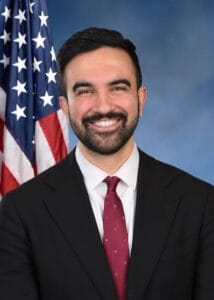Advocates seek more school programming for NYC’s newcomer immigrants

Choosing a public high school can be a daunting process for New York City families. But it can be particularly confusing for older students who are new to the United States, speak limited to no English, and in some cases, may have gone years without formal schooling.
For years, immigration advocates have cited those students as they pushed the city to create more school programs tailored to the needs of new immigrants — and this year, they may get their wish.
The Education Collaborative, a coalition of more than 30 community organizations, wants the city to launch a three-year, $8.2 million pilot program that would hire more teachers and bilingual social workers to work with up to 400 more newcomer immigrant students, ages 16-21. Those staff, paired with professional development for current teachers, would be directed to several of the city’s existing transfer schools, which are for students not on track to graduate on time.
“Public schools are in many ways largely inaccessible for thousands of newcomer youth from the ages of 16 and up,” said Andrea Ortiz, senior manager of education policy at the New York Immigration Coalition, which helped draft plans for the pilot.
Every city school must identify and provide extra language services to students learning English as a new language and receive extra funding to do so. However, newcomer immigrant youth often face even more challenges, such as balancing a job with school, than others learning the language. They also report that they don’t receive enough support in learning English at school, or that it’s tough for them to navigate and understand classwork. Advocates point to the city dropout rate as a key indicator of these problems: 16% for English learners last school year, compared with 5% of all students.
Those schools may also lack enough teachers trained in serving English learners or bilingual social workers. And the teens might be refugees or the officially designated Students with Inconsistent/Interrupted Formal Education — meaning that they’re two or more years below grade level in their home language in literacy, math, or both.
There are five transfer schools with more intensive programming for students learning English as a new language. The pilot program would expand that sort of model into Queens, the Bronx, and Brooklyn. Four of the five existing schools are located in Manhattan and one is in the Bronx, even though the majority of newer immigrants ages 14-21 live in the Bronx, followed by Queens and Brooklyn, according to Census data analyzed by the Migration Policy Institute.
“It’s very frustrating and actually quite depressing for us as advocates because we know that when we meet a student who lives geographically far from the [English language learner] transfer schools, we know immediately it is going to be an uphill battle,” said Rita Rodriguez-Engberg, director of the Immigrant Students Rights Project at Advocates for Children New York.
Carolyne Quintana, deputy chancellor of teaching and learning, said the city plans “to increase the number of transfer schools for newcomer [English language learners]” during a town hall meeting last month.
Asked about Quintana’s comments, city officials say they have been working with these advocates and are interested in the idea, as Mayor Eric Adams crafts a budget plan for next fiscal year, which starts July 1.
“Expanded access to high quality transfer school programs for older newcomer students is one way we can meet the needs of students who need alternative forms of education in supportive, welcoming environments,” said Nicole Brownstein, a spokesperson for the education department, in a statement.













